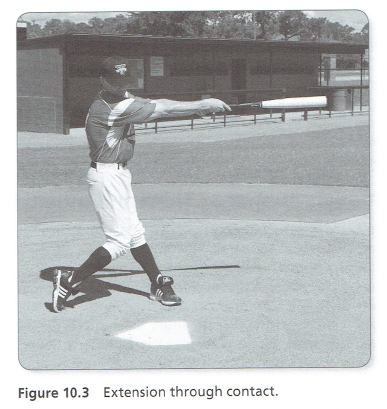|
Runner at Third, Infield Back, Less Than Two Outs By: Todd Guilliams Originally Published in: High-Scoring Baseball - Human Kinetics
With a runner at third, less than two outs, and the infield playing back, the hitter is in a great position to collect an RBI because he can do so without getting a base hit. To be in this position, the hitter has benefited from his teammate's ability not only to get on base but also to propel himself around the bases. The hitter needs only to put the ball in play on the ground in the middle of the field for the runner to score. This situation is a prime example of team baseball; each hitter who contributed passed the baton to the next to make a successful chain that manufactures the run. In this situation, the offense needs an unselfish at-bat, a hitter who understands that an RBI is more important than a base hit. The buzz phrase here is "play pepper," which means that the batter is to get on top of the baseball and hit it through the middle of the field. Less-skilled hitters might consider making their two-strike adjustments from the first pitch by spreading out, getting closer to the plate, choking up on the bat, and shortening their stroke. All of this helps ensure ground-ball contact, which increases the odds of getting the runner in from third base with the infield back. Another important buzz phrase that is applicable in this situation is "Brooks Robinson." We say this to hitters in this situation to conjure up the image of a great defender at third base who, if the ball is hit to him, will simply field the ball, throw home, and eliminate the RBI. With a runner at third base, the infield back, and less than two outs, a right-handed hitter must not hook the ball to third base. Pitchers will try to entice a right-handed hitter to hook the baseball by busting him inside with fastballs or getting him way out front with an off-speed pitch down in the zone. This tactic by the pitcher is one of the few ways to prevent the offense from scoring the runner from third with the infield back. Certainly, a strikeout, a ball hit back to the pitcher, or a shallow fly ball will also nullify the RBI opportunity in this situation. These at-bats can be frustrating for the offense because the defense is essentially conceding one run in the hope of staying out of the big inning. The hitter must do three things correctly with his bat path to ensure that he hits a firm ground ball through the middle of the diamond: 1. Maintain the shaft to the shoulder (use an inside-out stroke) (figure 10.1). 2. Keep the barrel above the flight of the ball until contact (figure 10.2). 3. Extend through contact (keep the barrel flat through contact and finish) (figure 10.3). Another key in RBI situations is for the hitter to keep his front side down and in. To use the middle back side of the field, the hitter must close down at release. This skill is critical, especially in RBI situations, because the pitcher is going to throw more off-speed pitches in hopes that the hitter will pull off the ball and hit around the baseball, producing a weak big-hop ground ball.
The last key for the batter in this situation is what we like to call early action, which means that the hitter tries to put the ball in play early in the count. Because a strikeout is the worst outcome in this situation, the goal of early action is to avoid hitting with two strikes with a runner in scoring position. Although using this approach may cause some hitters to swing at borderline pitches, this is not necessarily detrimental because the hitter does not have to get a base hit; he just needs to make contact on the ground. Hence, his pitch selection does not have to be as fine to achieve a quality at-bat and collect an RBI.
In standard batting practice format, put base runners on third base and practice hitting with no outs and the infield back and with one out and the infield back on a daily basis. Place a screen halfway down the third-base line to protect the runner. The BP pitcher should change speeds on the hitter to simulate a game situation. Coaches can evaluate the players' intent; they should be on top of the baseball, up the middle, and on the ground, which is the essence of playing pepper. One Out
|








